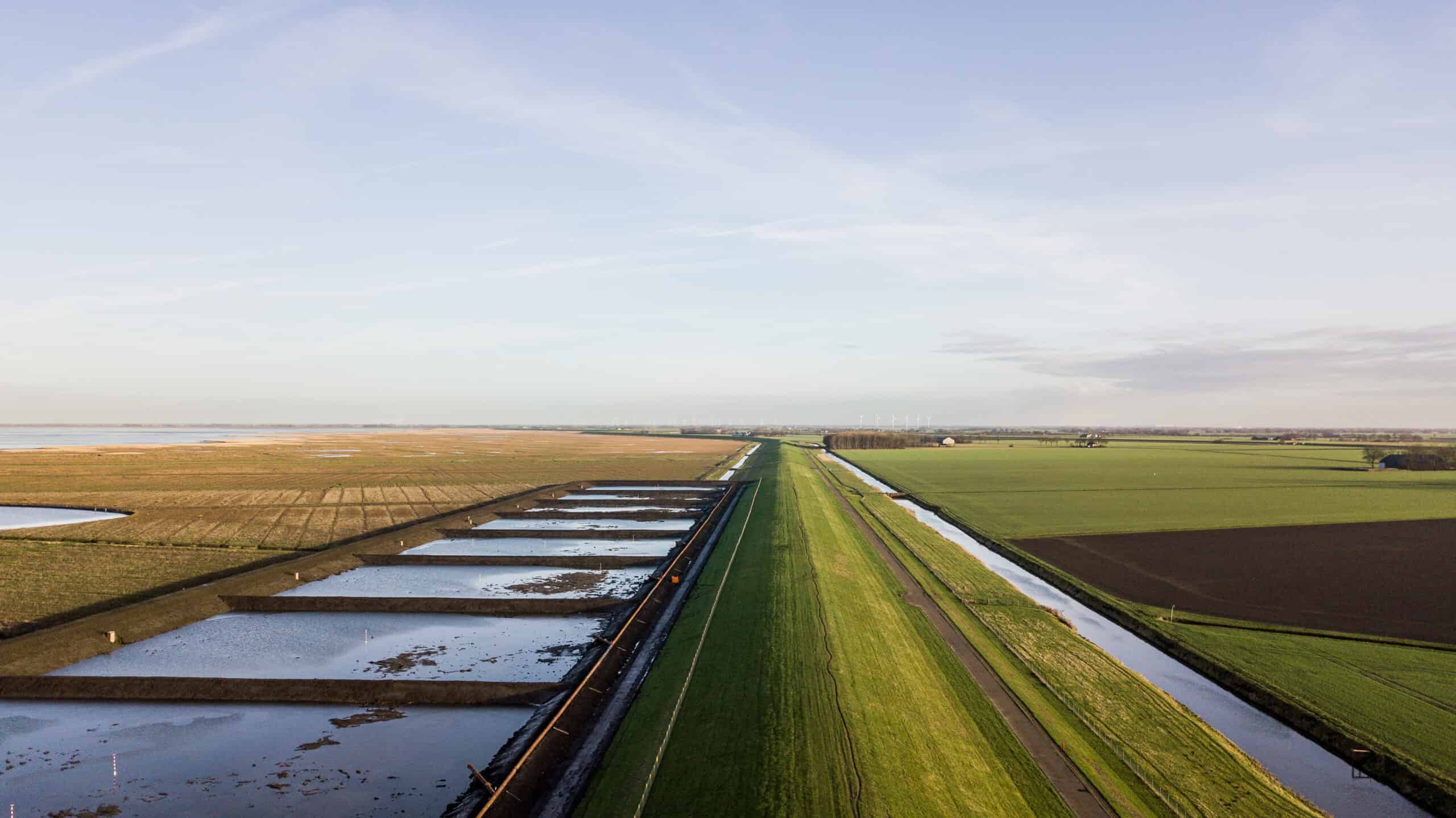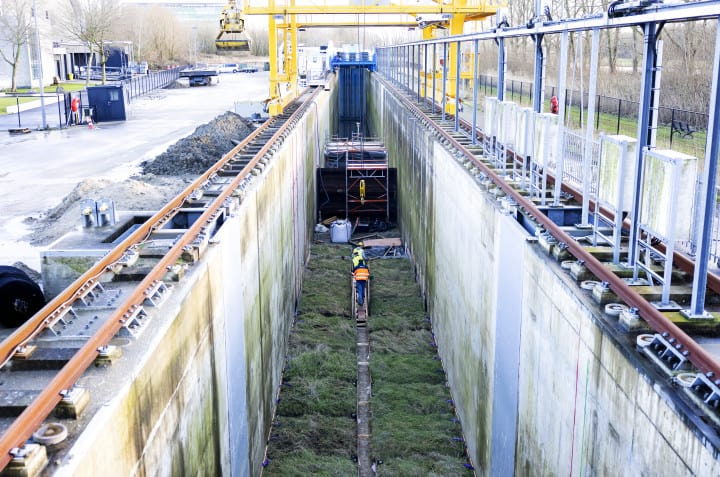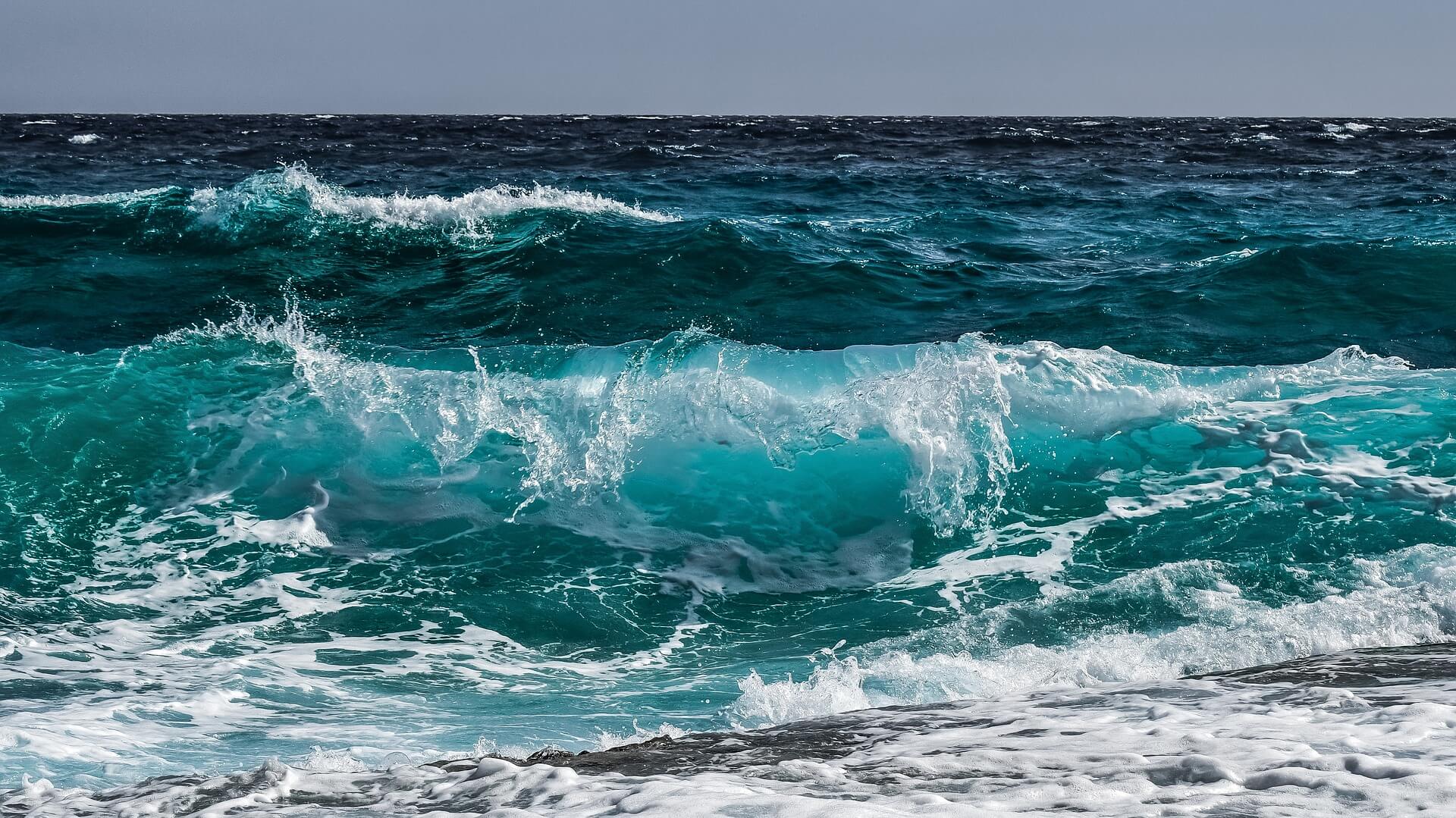
Dimitris Dermentzoglou, PhD student in Coastal Engineering, investigates whether salt marshes can serve as a natural solution for coastal protection. It is why he mimics salt marsh vegetation at the TU Delft Waterlab. He hopes his research will yield a more sustainable alternative to the repeated raising of dikes, says the university in a press release.
- TU Delft is conducting research on coastal protection using salt marshes as a sustainable alternative
- Salt marshes can absorb waves and reduce dike overflow
- They adapt to rising sea levels and provide a natural solution
Waves travel from one end to the other through a fifty-metre-long channel of water. Halfway down the flume, the waves travel over and through blades of grass made from rubber. The surging waves make the blades dance back and forth. A few metres further down the flume, the waves break on a gently angled wooden board.
Dimitris Dermentzoglou uses the flume to investigate whether a salt marsh can provide effective coastal protection. “Salt marsh vegetation can absorb some wave energy during a heavy storm and thereby reduce the height of the incoming waves, making it less likely that they will overtop the dike,” he says. “But salt marshes are currently not at all considered when designing coastal protection.” His research may change that.
Living dikes
His research is part of ‘Living Dikes’: a multi-year, multi-disciplinary research project into nature-based alternatives to ‘hard’ dikes. Living dikes are green dikes with a sea-side salt marsh that may play an important role in future coastal protection. Dermentzoglou: “A rise in sea level substantially decreases the effectiveness of common ‘hard dikes’. It means they will need to be raised. Every few decades, the unnatural materials used, such as asphalt, also need replacing.”
Dermentzoglou explains that salt marshes could be the solution. “If sufficient sediment is available, salt marshes can grow with sea level rise.” Salt marshes are stretches of land on the seaside of dikes that are occasionally flooded. Plants such as cordgrass thrive in these conditions and they will retain sediment over time, raising the salt marsh. ”But hard data is lacking as the performance of salt marshes during extreme storm conditions has not yet been studied.”
Prior to reaching the rubber glass blades, the waves pass over an artificial cliff. Continual erosion often leads to a cliff being formed at the edge of a salt-marsh. This is the part that PhD student Jos Muller and master student Pieter Faber from the University of Twente focus on with their experimental setup. Specifically, they study how this cliff affects the local hydrodynamics. Once the waves have passed the black rubber vegetation, they reach the wooden board. Here, master student Stijn Lakerveld (TU Delft) uses a camera to measure how far and high the waves reach on the dike.

50,000 rubber grass blades
For their experiments in the flume, measuring how good vegetation is at reducing wave energy, Dermentzoglou and his colleagues had to produce long blades of cordgrass on a scale of 1:10. “Our first challenge was to find a suitable material, for which I consulted ChatGPT,” he says. “To accurately mimic wave attenuation, it was very important for the flexibility and movement of the blades to match that of real plants.” Extensive testing yielded neoprene, a type of rubber. “It is a material commonly used in wet suits,” he says. Then, to build the scaled-down model of the salt marsh, he needed 50,000 rubber blades of exactly nine centimetres length. Where to get them?
Lab technician Pieter van der Gaag came up with a solution that substantially reduced the amount of manual labour required. Dermentzoglou: “Our technicians are very inventive and they helped solve many of our problems.” Using a wooden frame shaped like an abacus (counting frame) without the coloured beads, they could hang twenty rolls of rubber side to side. Unrolling them simultaneously up to two wooden slats placed exactly nine centimetres apart allowed him to cut twenty strands at a time.
To attach the 50,000 strands to the mat, one by one, he reached out to all PhD students of the faculty. “Some twenty colleagues came by to help,” Dermentzoglou says glowingly. “That certainly made it much less of a hassle.” After four long days, all 50,000 blades of ‘cordgrass’ had been glued to the mat. “I felt very relieved and fulfilled when it was finished,” he says.
White water
With the experimental setup completed, it was time to switch on the wave generator at the front of the flume and generate storm-like waves. On a computer screen, the researchers watch the data being gathered in real-time – with a squiggly line on the screen exactly matching the shape of the waves travelling through the glass tank.
The water in the flume is extremely white. “We add tiny, hollow spheres of glass to the water to increase its reflectivity,” Dermentzoglou explains. A laser scanner placed high on a wooden scaffold – also built by the lab technicians – sends out laser beams to the tank below. The water surface reflects the beams, allowing the water surface to be tracked.
Lawnmower
Dermentzoglou enjoys doing research in the flume, which he also used for his master thesis. “It’s a lot of fun, I love it,” he says. “You can read all a lot of theory about wave hydrodynamics, but this is where you can see real-world physics.”
Dermentzoglou also wants to repeat the salt marsh experiment using shorter blades of grass. Will he make another mat from scratch? He laughs and shakes his head: “No. Perhaps I can cut them with a lawnmower.”







